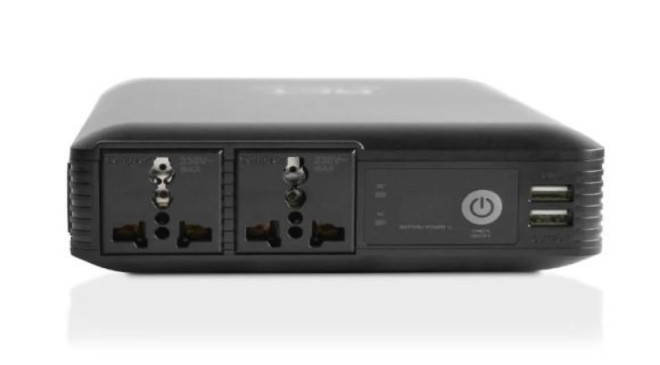Loadshedding, while not new for many South Africans, has become more of a permanent fixture in our day-to-day lives. In response, more backup power solutions have become available to individuals, homeowners and businesses. From generators to inverters and solar, there are a variety of options on the market, but where does one start?
Also Read- NASA Parts Designed By AI Look Like ‘Bones Left by Some Alien Species’
Between lithium-ion batteries, milliampere hours and watts, there’s a lot of jargon to sort through. However, there are some easy tips and tricks that can help you choose the right backup power setup for what you need.
Battery basics
When it comes to backup power solutions, there are a number of rechargeable batteries available. The difference lies in their capacity, life span, charging time and price.
The lead battery is the most common rechargeable battery available today. The reason for this is because the technology while old is tried and tested and therefore very reliable. It is also the most cost effective. That being said, it does have a shorter lifecycle than other batteries and it’s recommended by manufacturers that you only discharge 50% of its capacity. Lead batteries also take longer to charge uninterrupted.
Also Read– The OnePlus 11’s battery life is what I expect from flagship phones going forward
Lithium-ion batteries are a newer type of battery technology that we see in lots of devices like smartphones, laptops and some cordless appliances. They have a longer lifecycle, are lighter than lead, can discharge up to 80% of their capacity and have a faster charging time. This does, however, mean that lithium-ion can be significantly more expensive than lead batteries.
What is critical vs. what is a nice-to-have?
When it comes to deciding what battery backup solution a home or business needs, the best place to start is deciding on what is critical and what’s a nice-to-have. With this in mind, you can make the right choice based on your essential needs.
It is important to remember that while batteries have come a long way, some have limitations and not all rechargeable batteries can support appliances with a heating element. Appliances like kettles, microwaves and ovens as well as geysers are not suitable for all battery backup systems. These unfortunately drain too much power too quickly and can damage the batteries, reducing their lifecycle and capacity. So before choosing a system, double check the capabilities of the batteries in the unit.
Also Read- Elon Musk Makes a Big Announcement

Do some calculations
With your list in hand, it’s a matter of adding up the watts on each essential device to then get an idea of the estimated capacity needed. This maximum watt figure can be found on the back of each device or the corresponding adapter.
For example, if you’re working from home and need a laptop (65 watts), Wi-Fi modem (5.4 watts), monitor (15 watts) and a fully charged cell phone (12 watts), the total is 97.5 watts. Multiply this by three to reach the watt hours, which would be 292.2.
Also Read– NASA Parts Designed By AI Look Like ‘Bones Left by Some Alien Species’
It’s this calculation that will help determine which backup power solution will be the best fit and ensures a bit of additional capacity cushioning should your loadshedding block go on longer than expected. Just keep in mind that the more electronics you add to the system, the faster it will drain the batteries and the more time they will need to charge between loadshedding blocks.
Match your needs to the right solution
In today’s modern world, uninterrupted internet access is non-negotiable. Powering a Wi-Fi network at home or in a small office can easily be done with a small plug-and-play UPS. These are hardly bigger than the modem itself and can ensure you’re connected for a few hours. Many also have the option of charging devices like smartphones or tablets. In the case of the RCT MegaPower Lithium UPS, you can plug in your modem and charge two devices.
If you’re looking to power more than just your WiFi, a plug-and-play inverter trolley is a great option for a home office or small business. This would allow you to run your internet, a couple laptops and monitors with some capacity leftover for charging smartphones and other devices. At the end of the workday, swap the laptops and monitors for your smart TV and decoder to catch up on the latest series and movies. The RCT Megapower Inverter Trolley would make for a fuss-free fit in this environment.
For some businesses, greater capacity and output is needed. Many repair service businesses are dependent on clients having power in their homes and if you are visiting multiple clients in various areas during the day, you are at the mercy of each area’s loadshedding schedule. Ensuring adequate backup power can be done with the likes of a generator but also an inverter like the EcoFlow DELTA. This particular inverter can run power tools like circular saws, drills and even a welding machine. If you’re not in the power tools game, but need something to run your business’s fridges and freezers, the EcoFlow can step in and power a 150-watt fridge for seven to ten hours.
Also Read- Elon Musk Makes a Big Announcement
There are of course a host of options for homes and businesses, but you have to ask yourself what is essential to your day-to-day. Knowing exactly what you need to get through a day of loadshedding is an important starting point for finding the right battery capacity and solution.



































